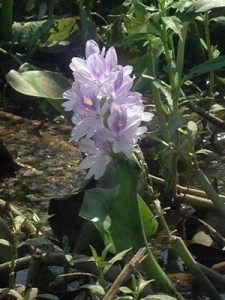Invasive Species
Introduction | Species Info | Teacher Materials | Resources
Introduction to Invasive Species
 Non-native or exotic species come from all over the world. Some arrive as stowaways on boats, some are smuggled here in suitcases and cars and some come in aquariums. But they all have one thing in common: they are not native to our area. While some nonnative species are not harmful to our community, many species behave like unwelcome intruders, often out-competing beneficial native plants and animals. These are known as invasive species.
Non-native or exotic species come from all over the world. Some arrive as stowaways on boats, some are smuggled here in suitcases and cars and some come in aquariums. But they all have one thing in common: they are not native to our area. While some nonnative species are not harmful to our community, many species behave like unwelcome intruders, often out-competing beneficial native plants and animals. These are known as invasive species.
Invasive species have three characteristics in common: prolific reproduction, broad ability to adjust to environmental stress and advanced capacity to acquire nutrition. The problem with invasive species is that they can cause harmful changes to our natural biological communities. For example, some eat species that are native to our area or out-compete them for food. They can change the physical habitat, making it a less comfortable or even stressful place for native species to continue to live and reproduce.
A multitude of invasive plants, animals and micro-organisms have found their way to our continent. They are often stowaway organisms that hitch a ride on an air or water current, boat or plane and find their way to a foreign shore. Sometimes imported species, such as nutria or water hyacinth, escape from enclosures into the wild. The cost of dealing with and trying to control invasive species is very high. Groups concerned with preserving and conserving the environment in a watershed must be aware of the presence of these species and the potential impact they can have if left unchecked.
